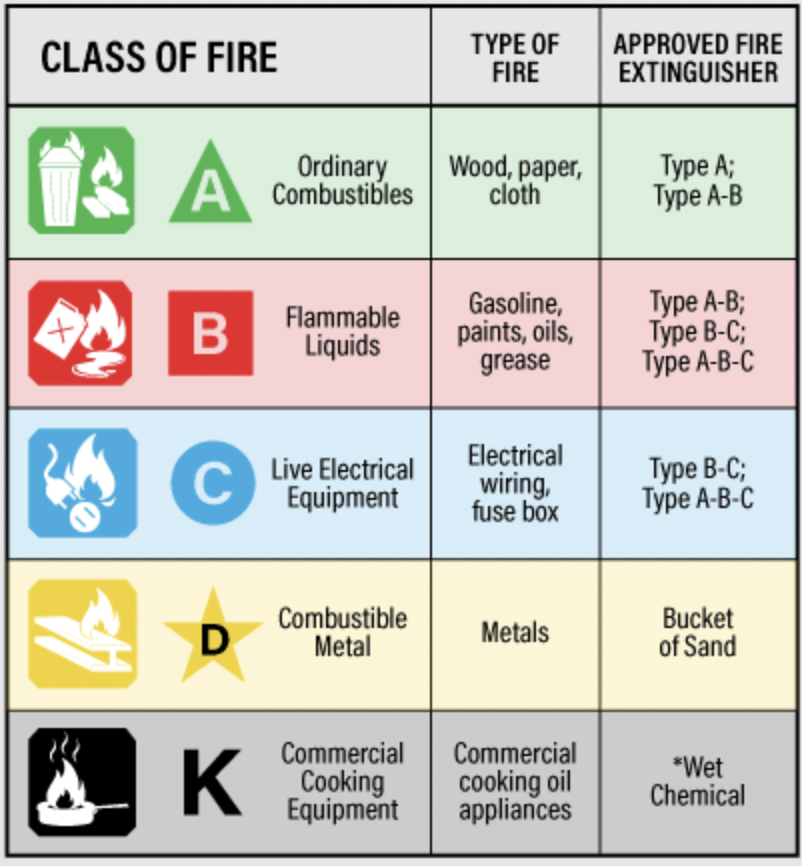If a fire breaks out, pulling a pull station will hopefully get the fire department to show up soon (if there is a functioning fire alarm system) but, a common tool that can be used to combat smaller fires more immediately is an old-fashioned Fire Extinguisher. A Fire Extinguisher is a portable fire safety device whose function is to extinguish or control small fires in the event of an emergency.
There are many different types of fire extinguishers, each varying based on the classification of fire they are meant to extinguish.
The five classifications of fires differ based on which materials are combusting (see table provided for more information). These fire classifications are used to differentiate between suppression methods. For example, if an extinguisher is needed to protect wooden pallets, which causes a Class A fire (ordinary combustible materials), an extinguisher rated for protecting a Class A fire would be required. The most common type is an A-B-C fire extinguisher. A-B-C extinguishers are designed to fight Class A (ordinary combustibles), Class B (flammable liquids), and Class C (electrically energized equipment) fires, all in one extinguisher.
To ensure all fire extinguishers will operate effectively at the moment they are needed, these devices are required to be regularly inspected and periodically serviced. NFPA 10 requires all fire extinguishers to be inspected monthly to ensure the device has not been tampered with or damaged and that the extinguishing agent within does not settle. As well, fire extinguishers are required to receive maintenance every 6 years and a hydrostatic test every 12 years. A record of every monthly inspection, 6-year maintenance, and 12-year hydrostatic test completed shall be documented on a label and attached to each completed fire extinguisher. A fire extinguisher might be the only chance at putting out a fire before it has a chance to spread, which is why ensuring they are present and working when you need them is so important.

